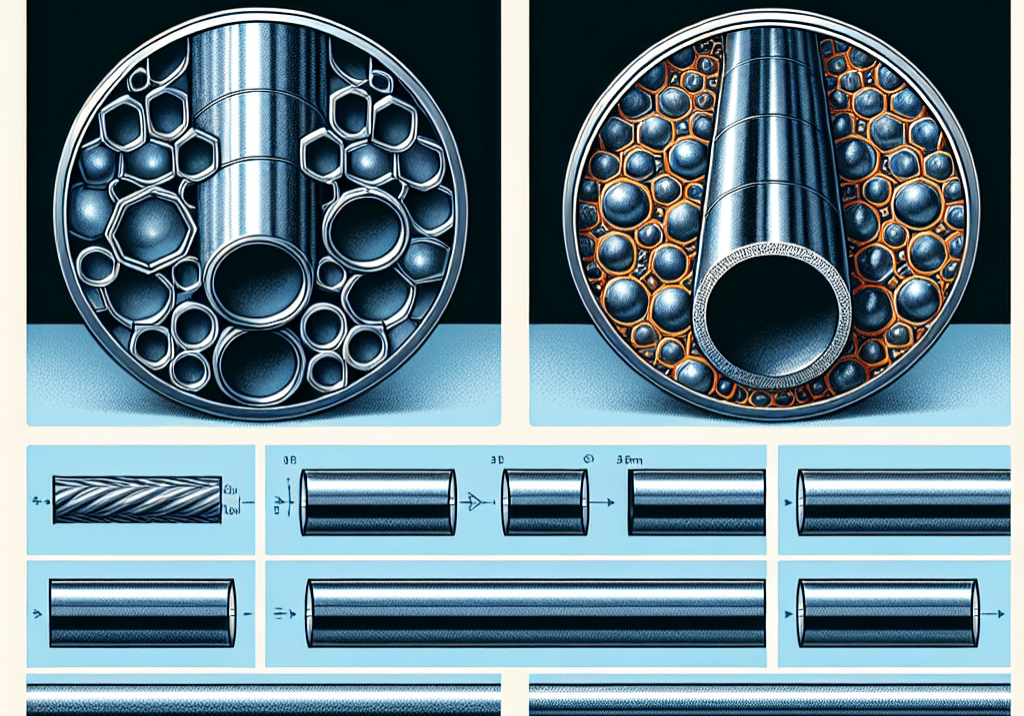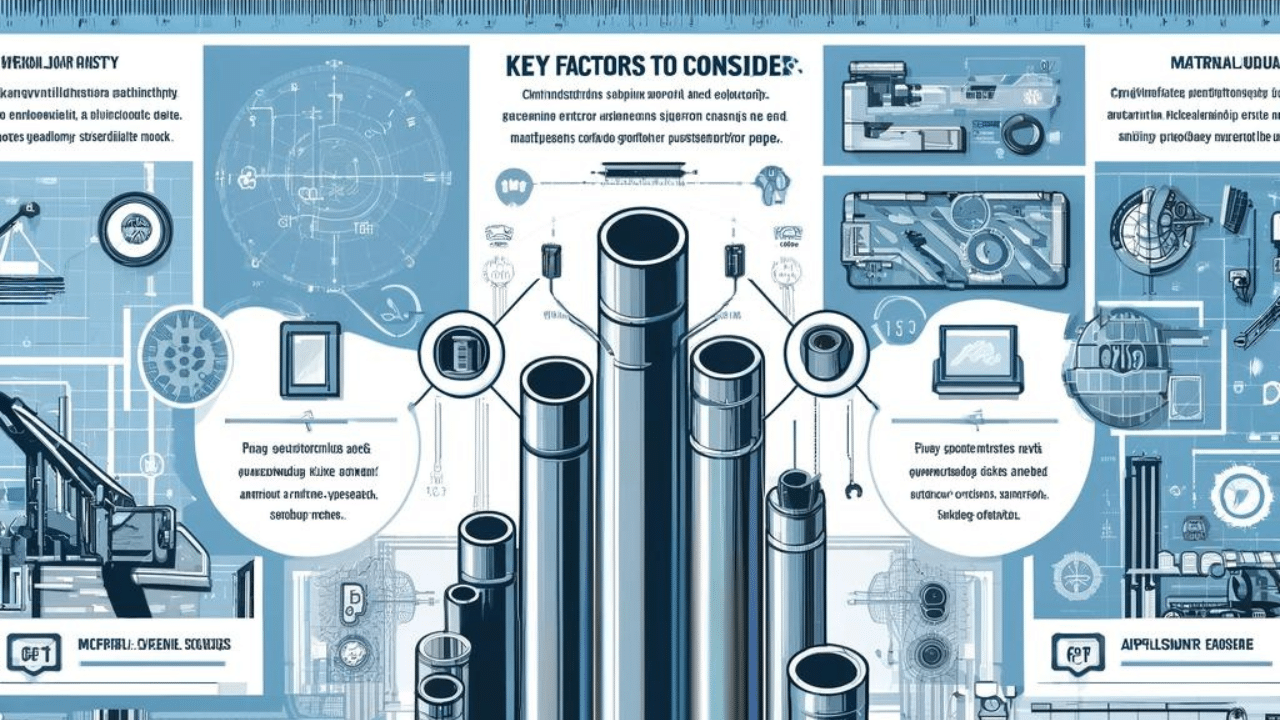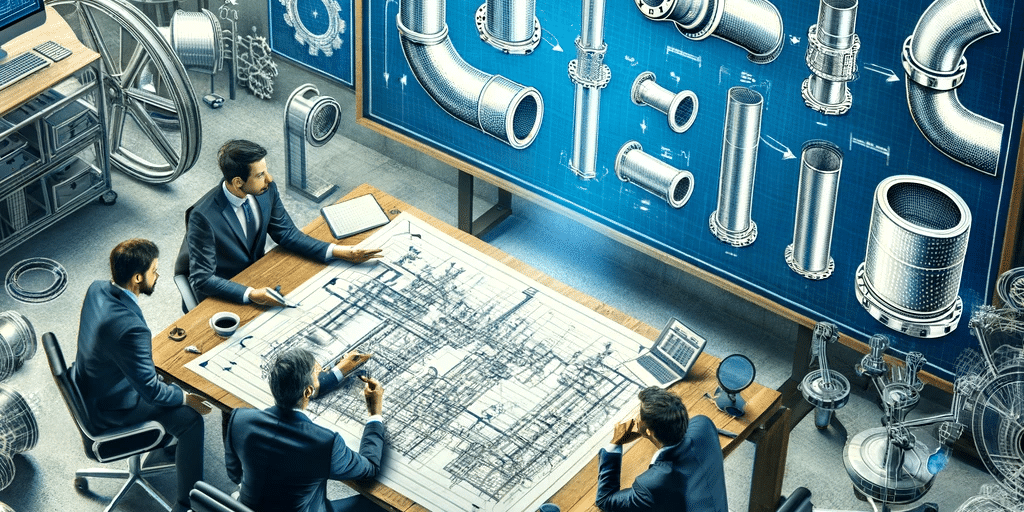
The Comprehensive Guide to Choosing the Right Steel Pipe for Your Project
Selecting the right steel pipe for your project is crucial to ensure efficiency, longevity, and cost-effectiveness. Various factors, including the type of steel, manufacturing process, and application requirements, play a significant role in this decision.
This comprehensive guide will help you navigate through the different types of steel pipes and their applications, assisting you in making informed decisions for your projects.
1. Understanding the Basics of Steel Pipes

Steel pipes are categorized primarily into two types: welded and seamless. Each type has distinct characteristics, advantages, and applications.
Welded Steel Pipes
Welded steel pipes are made by rolling a steel plate and welding the seam. This process allows for a wide range of sizes and diameters. Welded pipes are commonly used in lower-pressure applications, such as plumbing, where their cost-effectiveness and versatility are advantageous.
Seamless Steel Pipes
Seamless steel pipes are produced by piercing a solid billet of steel to create a hollow tube. This method ensures a high degree of strength and uniformity, making seamless pipes ideal for high-pressure applications like oil and gas exploration and chemical processing.
Contact Federal Steel Supply
If you need expert guidance on selecting the right steel pipe for your project, contact Federal Steel Supply. Our team of specialists is here to provide personalized advice and custom solutions tailored to your specific needs. Send us a message or call us at (800) 325-1584 to learn more.
2. Key Factors to Consider When Choosing Steel Pipes

1. Application Requirements
The primary factor in choosing the right steel pipe is its application. Understanding the specific requirements of your project, such as pressure, temperature, and environmental conditions, will guide your selection process.
2. Material and Grade
Steel pipes come in various grades, each designed to meet different mechanical and chemical properties. For instance, S/A53 steel is popular for industrial piping due to its weldability and corrosion resistance. Stainless steel, with its high corrosion resistance and durability, is preferred in the food and beverage industry. Learn about the benefits of A53 steel.
3. Strength and Durability
Seamless pipes generally offer superior strength and durability, making them suitable for high-stress environments. Welded pipes, while not as strong, are adequate for many standard uses and are easier to inspect for quality assurance. Discover our detailed guide on welded vs. seamless steel pipes.
4. Performance in Extreme Conditions
If your project involves extreme temperatures or high-pressure scenarios, seamless pipes are often the better choice due to their uniform structure. Welded pipes are more suitable for less demanding environments.
3. Common Types of Steel Pipes and Their Applications
Carbon Steel Pipes
Carbon steel pipes are known for their strength and ability to withstand high temperatures. They are commonly used in industrial applications such as oil and gas transmission, water pipelines, and structural applications.
Stainless Steel Pipes
Stainless steel pipes are valued for their corrosion resistance and hygienic properties, making them ideal for food and beverage processing, pharmaceuticals, and water treatment facilities.
Learn more about the common applications for stainless steel piping.
Alloy Steel Pipes
Alloy steel pipes are designed for specific properties such as high strength, temperature resistance, and durability. They are often used in power plants, refineries, and other high-temperature environments.
4. Environmental and Sustainability Considerations

Sustainability is becoming increasingly important in the steel industry. Both welded and seamless pipes can be recycled, contributing to sustainable construction practices. The production of seamless pipes requires more energy, impacting their carbon footprint, while welded pipes are less energy-intensive to manufacture.
5. Innovations and Trends in Steel Pipe Manufacturing
The steel pipe industry is continually evolving with advancements in manufacturing technology. Innovations in welding techniques and improvements in seamless pipe quality are enhancing the performance and sustainability of steel pipes. These advancements are driving the industry towards more efficient and eco-friendly practices.
6. Practical Tips for Selecting the Right Steel Pipe
- Assess Your Project Needs: Understand the specific requirements, including pressure, temperature, and environmental conditions.
- Choose the Appropriate Grade: Select the steel grade that best meets the chemical and mechanical properties needed for your project.
- Consider Cost vs. Benefit: Evaluate the cost implications of using welded versus seamless pipes in the context of your project's demands.
- Ensure Compliance with Standards: Verify that the steel pipes meet relevant industry standards and certifications to ensure safety and reliability.
- Consult with Experts: When in doubt, seek advice from industry professionals who can provide insights based on their experience and expertise.
Key Takeaways
Choosing the right steel pipe for your project is a critical decision that impacts the efficiency, durability, and cost-effectiveness of your operations. By understanding the different types of steel pipes, their applications, and key considerations, you can make an informed choice that aligns with your project requirements.
Federal Steel Supply offers a wide range of steel pipes and expert guidance to help you select the best options for your needs. Visit Federal Steel Supply for more information and assistance with your steel pipe requirements.
Frequently Asked Questions
There are two primary types of steel pipes: welded and seamless.
Welded pipes are made by rolling a steel plate and welding the seam, suitable for lower-pressure applications.
Seamless pipes are created by piercing a solid billet of steel, ideal for high-pressure applications due to their strength and uniformity.
To choose the right steel pipe, consider the following:
- application requirements,
- material and grade,
- strength and durability,
- cost and affordability,
- performance in extreme conditions.
Welded pipes are cost-effective and versatile, while seamless pipes offer superior strength for high-stress environments.











